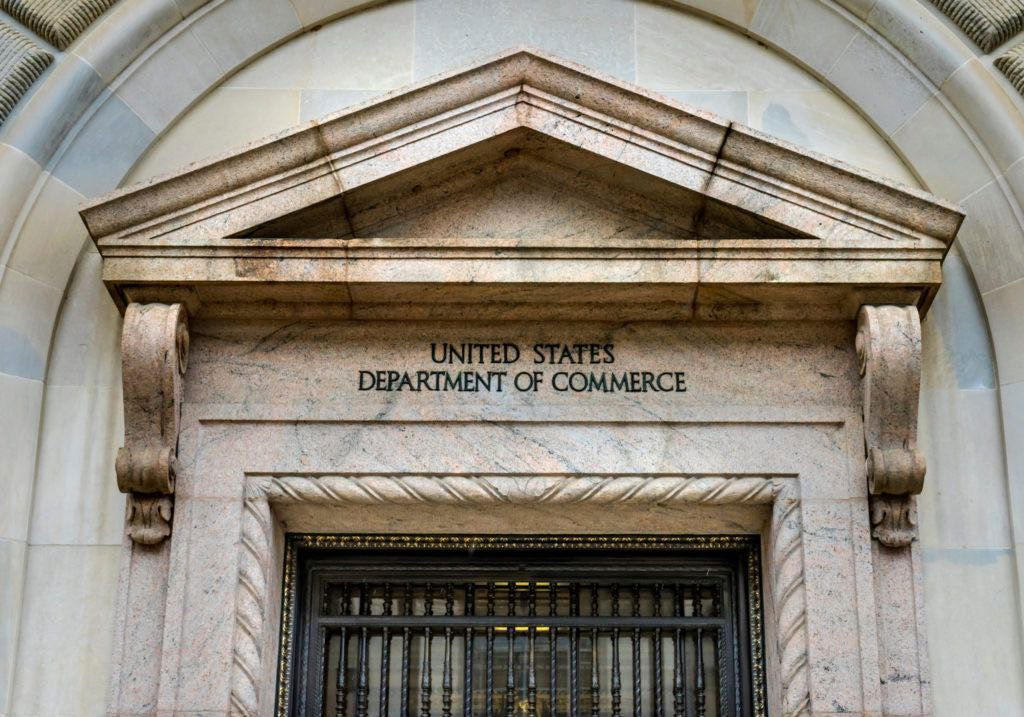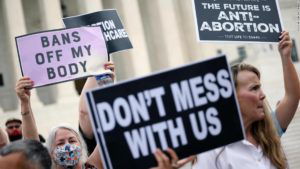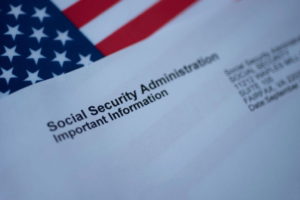
Remarks by Deputy Secretary of Commerce Don Graves at the National Foreign Trade Council’s Alliance for National Security and Competitiveness
Jan 10, 2024
Remarks by Deputy Secretary of Commerce Don Graves at the National Foreign Trade Council’s Alliance for National Security and Competitiveness
ASowah@doc.gov
Wed, 01/10/2024 – 11:48
Cybersecurity
Weather and satellites
AS PREPARED FOR DELIVERY
Tuesday, January 9, 2024
Office of Public Affairs
publicaffairs@doc.gov
Hello everyone. I’m very pleased to join you all today as we mark the launch of the National Foreign Trade Council’s Alliance for National Security and Competitiveness.
The launch of this alliance could not be more timely. As President Biden often says, we are at a critical inflection point in our national security.
The COVID pandemic exposed serious vulnerabilities in our supply chains and we took immediate steps to make them more resilient and efficient. As our globe heats up to record temperatures and the future of our climate continues to hang in the balance, we are forging an innovative, sustainable path forward. Russia continues to wage an unprovoked war of aggression against Ukraine and its people. Authoritarian regimes have become increasingly emboldened, posing an existential threat to the rules-based economic order we have helped establish across the globe. And finally, we are engaged in a high-stakes, must-win technology competition with those regimes that will determine the future of our economic landscape for generations to come.
It’s a new world, and this era calls for new methods of understanding and responding to our national security – one that places our economic strength and toolkits at its center.
At the Department of Commerce, we are focused on national security more than ever. We are investing in our tools today to ensure we’re prepared for whatever challenges we may face in our future national security environment.
But we can’t do this alone. The private sector is a critical partner across all of our national security priorities to protect the American people, preserve our natural environment in the face of climate change, and promote U.S. leadership and partnership in a free, fair, prosperous, and secure economic order.
Let me give you five examples of how we have already worked together for the common good.
INNOVATION/CRITICAL & EMERGING TECH
On critical and emerging technologies, while our adversaries seek to abuse new technology for malign purposes, the U.S. and likeminded democracies need to take advantage of one of our greatest assets – an able and thriving private sector – to thwart these bad actors and keep our rules-based economic systems in place. Building and maintaining critical and emerging tech leadership allows us to best channel these technologies for societal good, enabling companies to compete fairly on a level playing field while also ensuring security and safety.
One of the tools at our disposal in this fight is the implementation of export controls to ensure that the U.S. private sector’s technological innovation is not diverted to destructive ends that hurt our national security while also still allowing for technological innovation to take place here at home.
Through our Bureau of Industry and Security, industry leaders – many even in this room – continue to take part in the Technical Advisory Committees, where important decisions on the future of our work are made. We’ve also announced the re-establishment of the President’s Export Council Subcommittee on Export Administration, which will provide even more high-level engagement for the private sector executives and the Department.
CYBERSECURITY & DATA PRIVACY
Protecting our cybersecurity infrastructure is also paramount, not just in our goal of technological leadership but for our larger national security.
In September of last year, I had the opportunity to lead a delegation of 25 American companies on a cybersecurity trade mission to the Republic of Korea and Japan. Over the course of the week, we met with foreign officials and industry leaders to forge new inroads for our international partnerships to bolster our shared security. Our National Institute of Standards and Technology, or NIST, works hand in glove with industry as it develops guidance frameworks, like its Cybersecurity Framework 2.0, an indispensable tool for organizations to address their cybersecurity risks. A draft was released last year for public comment, and we plan to publish the framework early this year.
DEFENSE INDUSTRIAL BASE
Another key priority of our national security lies in the development of defensive partnerships. At Commerce, we not only maintain a sharp focus on weakening Russia’s war machine through aggressive export control measures but our teams in Kyiv and in Washington are engaged in constant business development campaigns to support the commercial linkages that bring our countries closer together, chiefly among them: our robust defense industry.
The United States leads the world in defense technology and is invested in ensuring our partners and allies across the globe have the means to defend themselves. In Ukraine alone, U.S. defense companies are providing more than $44 billion in security assistance.
What’s more, U.S. technology, combined with the resilience of Ukraine’s defending forces, has the potential to realize a vision of the future that places peace, prosperity, and progress at its center – leading the way in creating a Ukraine that houses a world-class defense industry base for years to come.
This is just one example of what happens when governments and private sectors work together.
SUPPLY CHAINS
Increasing U.S. supply chain resilience is, without question, a national security imperative for the Commerce Department as we aim to free ourselves from dangerous dependencies. Resilient U.S. supply chains depend on close collaboration with private industry, working with government, academia, and others to take comprehensive action aimed at ensuring our competitive edge.
That’s why Commerce has launched a first-of-its-kind Supply Chain Center for the federal government that will serve as the analytic engine for supply chain resilience policy action within the federal government.
Our Supply Chain Center, housed inside our International Trade Administration, will aid us in getting ahead of supply chain challenges, set priorities for policy focus and action based on data-driven risk analysis, be a force multiplier in improving the targeting and effectiveness of U.S. Government investments, and serve as a partner with industry in building resilient supply chains and supporting U.S. businesses in leading the industries of the future.
As we get this vital work off the ground, I am excited to announce that Commerce will convene a diverse array of public and private sector leaders at a Supply Chain Data and Analytics Summit later this year. This will be a unique opportunity for the Department to gather expert input to inform our supply chain risk assessment models and tools and identify opportunities to facilitate expanded sharing of data and analytic capabilities.
I look forward to further collaboration with this group on this front.
ENVIRONMENTAL SECURITY
Finally, the impact of our changing climate on our national and economic security can’t be overstated. Last year alone, there were 28 separate billion-dollar weather and climate disaster events identified —the highest annual disaster count in the 44-year record. Our National Oceanic and Atmospheric Administration is leading the charge with other government agencies, international organizations, and the private sector to help countries develop the capacity and capabilities to provide high-quality forecasts and cope with the impacts of extreme weather and climate events.
NOAA and the National Science Foundation are working with insurance and reinsurance companies to improve catastrophe models and better quantify risk by incorporating more climate information, developing new tools for the insurance industry, and training the workforce of the future. Insurers and reinsurers have stressed a critical need for this work to improve their ability to identify physical climate risk and help make more informed and sustainable investment decisions.
Additionally, NOAA is using the Electric Power Research Institute to bring extreme weather and climate information into each stage of disaster planning to improve energy security, reduce exposure to extreme weather and climate events, and identify potential failure points for improving the resilience of the energy sector.
CLOSING
Fulfilling the mission of national security – for the Commerce Department and across the Biden-Harris Administration – wouldn’t be possible without robust, consistent partnerships between the federal government and the private sector.
Today, the Department plays a greater role in ensuring our national security than ever before. New landmark legislation has made it possible for us to meet our major national security challenges head-on – from chips and semiconductors to revitalizing America’s industrial base and unleashing technology innovation. And we are looking to sustain and expand that role in the days ahead.
That’s why I’m pleased to announce that the Department of Commerce will be announcing a Department-wide National Security Strategy this year in the coming weeks, which will address our major priorities and drive us forward in our mission to protect, promote, and preserve our national security.
Thank you very much for letting me speak with you all today. I look forward to our discussion.
Tags
Supply Chain
Ukraine
Read the full report from the U.S. Department of Commerce: Read More



